Brian and I are back from India. And while it wasn’t my choice to return so precipitously, canceling plans to visit Rajasthan and the Himalayas and the Taj Mahal, I still felt an upswell of gratitude upon seeing home as the plane descended.
India was a big lifestyle change:
- Living in student-style accommodation, one room with spare furnishings
- Sleeping on a three-inch mattress without box spring
- Negotiating for transportation instead of driving ourselves
- Dealing with communication issues, in person and remotely, including regular Internet outages
- Ordering and planning for water delivery to avoid water-borne illness
- Eating spicy food at every meal
- Getting sick frequently, despite precautions
Brian’s schedule, working from our apartment for a California startup, proved to be one of the most challenging situations. Because we lived in a studio, it was virtually impossible for him to sleep past my morning alarm after staying up for calls until 1 or 2am. He tried to nap during the day but his work schedule didn’t always allow it and he was continually exhausted. I credit the work situation with doing him in, but he’d probably say it was the bed itself.
That’s not to say that India has to be difficult. My colleague, a true expat, has a 3-bedroom apartment, a cook, a driver, filtered drinking water—many creature comforts that enable him to live comfortably away from his native New York.
But for us, India was a challenge, and a surprise. After all, this wasn’t our first time living abroad or in the developing world. We spent two months in Thailand in 2011. I spent a month in Ghana in 2009 and several months in the Czech Republic during college. Together, we’ve enjoyed month-plus stays in Australia and New Zealand. But, the past and its challenges aren’t what this post is about.
On to the Gratitude
What I wanted to share with you is how blessed so many of us are to have such simple things. For example, if you have:
- A safe and comfortable place to sleep
- Toilet and shower
- Trash removal services
- Adequate, safe food
- Clean drinking water
then you are better off than literally billions of people living today.
The United Nations Centre for Human Settlements estimates that more than one billion people live without adequate housing, and more than 100 million people are homeless. At least 80% of humanity lives on less than $10 a day (yes, including shelter). 780 million people live without clean drinking water, and 2.5 billion lack basic sanitation. And that’s to say nothing about access to education, doctors, and reliable transportation.
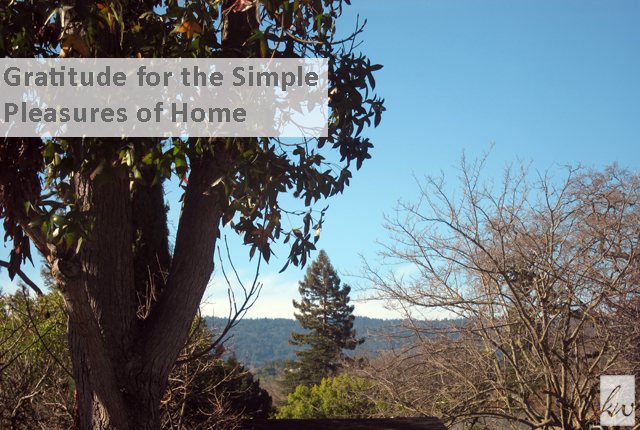 Home sweet home: the view from my kitchen window So, today I’d like to express deepest thanks for all of my blessings, not the least of which are:
- Food that is plentiful and doesn’t make me sick
- A home that has all the creature comforts
- A bed that makes me never want to leave home (hello, Tempurpedic!)
- My car, which gets me to appointments reliably, and frees me to visit friends and see the natural beauty of California on demand
- Freedom to see a good doctor, with whom we can communicate easily
Returning from India, my biggest moments of gratitude have involved water. I am so, so thankful:
- To be able to fill my water bottle from the kitchen tap whenever I want
- To have access to hot, high-pressure water in my shower (a truly heavenly experience once you’ve gone without)
- To be able to get shower water in my mouth, accidentally or on purpose, and not get sick
Such simple and delightful things!
What are you most thankful for today? Where are your areas of deepest gratitude?
Cheers,

P.S. For more about global access to water, sanitation, and shelter, here is a report from the Rockefeller Foundation.
After my business success series wrapped last week, you might have been wondering if everything was super easy or if I’ve made mistakes in my business. Of course I’ve made my fair share of mistakes! Everyone does. Here are some of my biggest business mistakes to date (or as I like to think of them, my learnings and growth opportunities):
Spending a crapload on marketing and promotions when I first relocated to California. How much is a crapload? About $20k, distributed across:
- advertising via print and online publications,
- participating in a bridal show,
- joining networking groups and attending related events,
- printing promotional materials and product samples,
- sending clients gifts, and
- managing my website and SEO.
As you can see, I was taking a bit of a scattershot approach to test outlets and opportunities. So, why was that a mistake? Well, first, it wasn’t strategic. I tested too many things and didn’t set a clear budget to limit my spending. Second, and this I could have only found out through testing, most of those outlets didn’t generate adequate returns to justify the expense. For example, traditional advertising didn’t work as well in California as it had in Virginia.
- In 2007, one ad I placed in a local wedding magazine resulted in 24 inquiries, which converted into 11 bookings.
- That same year, my online Knot ad generated 52 inquiries, resulting in 5 bookings.
Both of those outlets yielded strong responses and, in the case of the print ad, an excellent conversion rate.
- One year later, in California, my combined web/print ad with the Knot yielded 18 inquiries and 3 bookings.
While my hit rate was higher with the Knot in 2008, my referrals were down in the bigger market.
Had I approached marketing and promotions more strategically and incrementally, I could have limited overall expense and made minor tweaks to increase effectiveness throughout the course of the year.
Taking gigs I didn’t want. All of us get inquiries that don’t sit right. Maybe the prospect seems to only care about price or they ask you to do something that isn’t really your specialty. I’m not talking about the gigs where you think everything is fine and then somehow you end up on a different page than your client—because I’ve had those too—here, I’m talking about the gigs where you have an inkling that something’s wrong or see a mental caution flag or even a bright red expulsion card…and still you accept the job.
Well, when I first moved to California, I did exactly that—because I wasn’t sure I could fill my client roster otherwise. Back in Virginia, when my wedding calendar filled up in the first quarter, it was easy to suggest another photographer when someone asked if I could change my style or cut my rates just for them. That’s not always easy when your pipeline is feeling a bit thin.
But here’s what I learned: Every time I took a gig I didn’t want, I regretted it. Either the client and I didn’t exactly mesh, or I ended up having to shoot in a way that felt unnatural or that exhausted me. 50 group formals, anyone?! Yeah, totally not my style. Along the same lines, a related mistake was…
Accepting less than I was worth. I’m not a natural negotiator. I don’t ask other people to cut their rates for me and I’m always thrown when people ask me to do so. However, many engaged couples seem to feel completely comfortable negotiating for cut-rate packages, particularly in the off-season.
At times, when someone’s event hasn’t fit my packages—like when they’re having a small city hall ceremony and need only an hour or two of wedding coverage—I’ve happily crafted a custom package for them. Doing this generally works out fine.
My mistake has been in cutting rates just because someone asks. Whenever I’ve given someone a cut-rate deal, I’ve ended up resenting the client. I know it’s not their fault I cut my rates—it’s totally mine!—I still end up resenting them and that does not a positive client relationship make.
My key takeaway here is that when I’ve offered “deals,” I’ve done it out of fear. When I craft a custom package for a legitimate reason, it’s from the perspective of providing better service to a client. Fear is a bad place from which to act as a business owner.
Listening to other photographers’ wisdom and following industry advice. Shoulds, must-dos, best practices, none of these has served me particularly well in business. As I mentioned in my business success series, trusting my intuition always worked out best.
But I didn’t always heed my intuition. Early in my photography career, a photographer-friend told me that my portrait style wasn’t going to attract clients and, despite all evidence to the contrary, I listened. Had I stayed the path—shooting in my natural rhythm and attracting clients who wanted a relaxed, documentary style—I would probably still be shooting today. Instead, I burned out.
A recent Inc. article helped me clarify exactly what happened. Dr. Shelley Prevost wrote:
My favorite definition of burnout is this: burnout is not about giving too much of yourself, it’s about trying to give what you do not possess.
Exactly! I tried to give what I do not possess.
There are times when you’re struggling and actually appreciate the advice (or maybe just the nonjudgmental ear) of someone else in your field. But, for all those other times when you’re doing ok, I hereby give you permission to ignore everyone else’s opinions and advice and listen instead to your own heart, gut, and mind. Not that you need my permission but, just in case you do, there you have it.
What have your biggest business mistakes been, and what did you learn from them?
Cheers,

Travel is a great way to bring your assumptions to the fore. When you’re at home, living a steady routine, you mostly know what to expect day to day, and you may not even be aware of the decisions you make based on your assumptions. Traveling has a way of knocking you in the head with your assumptions and forcing you to question everything:
- They have universal plugs in our Bangalore apartment so they’ll probably have them at our Kochi hotel, right? — Nope, should have brought the adapters.
- A metered ride from our apartment to my workplace takes 20 minutes and cost Rs. 70, so I can time and budget my daily travel accordingly. — Nah, where’s the fun in that? The daily commute could last anywhere from 20 minutes to an hour, and cost between Rs. 70 to Rs. 350, depending on who’s driving and when the trip occurs. Every day in India is an adventure. Build in extra time and cash.
- I wear shorts at home when it’s hot; I’m sure I can do the same in India. — If you’re a man, you can probably get away with this. If you’re a woman, I wouldn’t recommend doing so in Bangalore unless you enjoy getting a lot of attention.
“The least questioned assumptions are often the most questionable.” – Paul Broca
I got the above quote from the folks over at Married with Luggage, who also had this to say about assumptions and challenging them. Apparently a lot of folks associate challenging assumptions with travel. Here is Bonnie Biafore’s take.
Another way to challenge assumptions is by applying a different lens to things. What better way than through photography? Here’s Aaron Huey on Shattering Assumptions for NatGeo:
While international travel has a way of slapping you upside the head with your assumptions, there are gentler ways to explore them. Doing so requires vigilance and awareness, however. If you aren’t aware when you’re making assumptions, after all, how can you challenge or change them? Or check that they’re still serving you?
“One’s first step in wisdom is to question everything—and one’s last is to come to terms with everything.” – Georg Christoph Lichtenberg
What assumptions do you live by? Are you going to question any today?
Cheers,

This is the final post in my six-part series, “How I Sold $100K My First Year in Business.” To see the rest of the series, scroll down to the bottom of this post. My last two takeaways from first-year business success are:
#9. I did the work. I worked regular hours every day and sometimes longer hours to meet and exceed client expectations. Even when I didn’t feel like it, I put my butt in the chair and edited images (while answering the phone, responding promptly to emails, and everything else I mentioned earlier.) In my opinion, this is the difference between an amateur and a professional. Pros do the work, even when they don’t feel like it.
There was a photographer in my area that first year who went AWOL. Her voicemail and email inboxes were full, clients were leaving notes on her door asking when she’d be done with their photos—and you can believe they were talking about her in online forums. You don’t want to be that guy or gal. Do the work! And deliver on your promises.
#10. I believed in myself and acted accordingly. Bottom line: I didn’t know I couldn’t do it. I was coming off a successful run as a consultant, having garnered positive feedback from my clients and supervisor, and having succeeded in raising several million dollars in partnership with my clients.
Also, I had just planned my own wedding in 2004/2005 and had done a lot of research on the photography industry. What had once seemed like an impossible barrier to entry—photographers had to be a special breed with way more talent than me, right?!—had been analyzed and found to be surmountable. I could do it. You can too. But you have to do your research and find your confidence. If you don’t believe in yourself, people can tell. And if you don’t trust yourself, why should they?
Sure, there were times I was nervous, but I chose to focus on the positive. I even went so far as to give myself pep talks on the way to weddings some days. “Kate, you are a great photographer. You’re going to be in the zone today, watching the action, capturing moments, and you’ll get amazing results.” Yeah, it sounds cheesy, but it’s a lot better than talking yourself into a poor performance.
And I reminded myself that if I goofed on a shot, clients wouldn’t be able to tell. Only I knew what I was trying to capture; clients only saw what I did capture.
Any remaining burning questions about business success, photography, or this series? Speak now or forever hold your peace.
Cheers,

If you missed a post in my “Business Success” series, here they all are in order:
2013 was the first time I chose a word for the year. I’d heard about the practice from Susannah Conway, but it turns out many, many women share it. Heather from Learn + Explore + Share explains that Ali Edwards was the concept creator — doesn’t that sound like a juicy role? — and she provides a lot of great resources on the topic.
My word for 2013 was love. It was chosen rather capriciously while standing on one of my favorite beaches in Northern California last January, but it has served me well. Early 2013 required significant healing and self-love brought on by realizing, as I mentioned in my recap post, that I was standing in my way rather than standing in my power. Acknowledging, accepting, and moving forward from that took love, acceptance, and self-care.

In thinking about my word for 2014, the first thing that came to mind was community (I even painted a mini-watercolor about it). That thought came from the realization that I want to deepen my ties to Silicon Valley through new friendships and to broaden my connections to interesting, empowered, creative people, wherever they are in the world.

When I later talked to my friend Cassandra, she suggested intuition based on my 2013 learnings. She’s right that a big learning from 2013 was that I have intuitive sparks but I don’t always heed them, so I trusted my intuition this time and decided that intuition didn’t feel exactly right for my 2014 word either.
As I meditated further, connection came to mind. Connection is the basis for my photography and it fits well with both intuition and community, deepening connection to self and community. I turned to Susannah’s Unravelling the Year Ahead guide, which suggests you can have one central word and four supporting words. Thank you, Susannah! – That’s exactly what I needed to hear this year.
So, without further ado, my word for the year, 2014, is: Connection.
In support of connection, I’m turning to my old pal love and adding in community, intuition, and health—in acknowledgment of my desire to strengthen connection to self, spirit, and community.
 Excerpted from Susannah Conway’s Unravelling 2014 What’s your word for 2014? And how did you decide on it? Share in the comments.
Cheers,

|









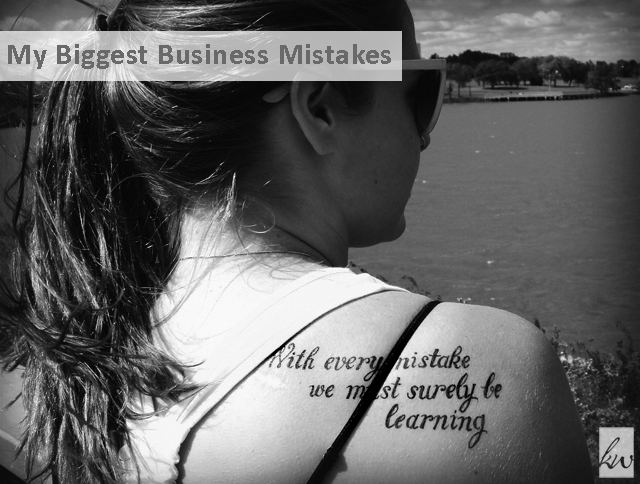
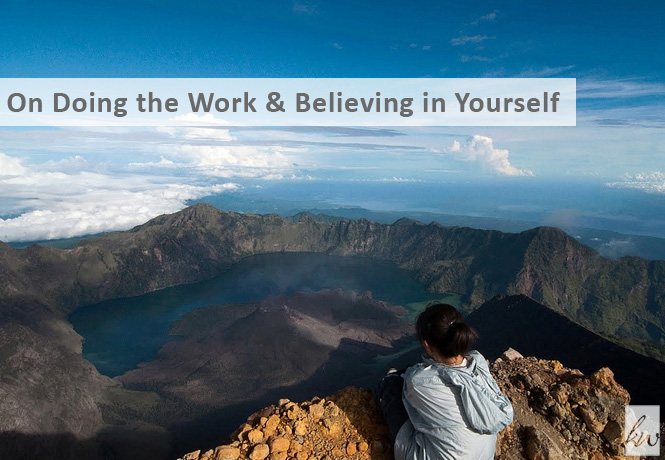

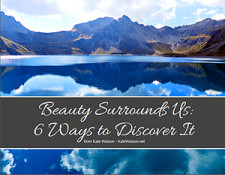
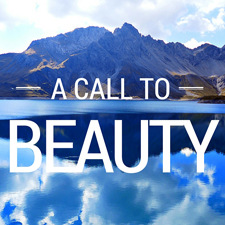
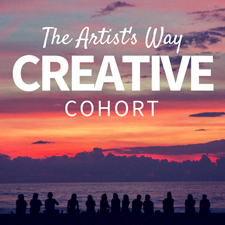







Why I Quit Photography » KateWatson.net - […] we left for India, my friend Amanda warned me, “India has a way of pushing you up against issues you need to face […]
Kate Watson - Hi Suzanne: Thanks for your comment! So good to hear from you and see your new venture. I agree that comparison can be dangerous, particularly when we add in judgment (such as judging others for how they choose to live). However, I also think it’s important to acknowledge that not everyone on this planet has basic necessities like food, water, and shelter, things I believe we all need. For me, gratitude for being home isn’t about comparing my resources to other people’s but acknowledging that, for me to be comfortable at this age and in this time, I need certain things. Other people may not need those things—after all, some of the happiest people on earth live simply. And isn’t it wonderful that we all want and need different things in life. 🙂
Suzanne Appel - Hi Kate,
So great to read your blog. I’d love to know more about your time in India. Gratitude is everything, isn’t it. But do you ever feel like there’s some dark side of gratitude in comparing our lives to others? I know we don’t intend to. Interesting thoughts. And very well written.
Suzanne